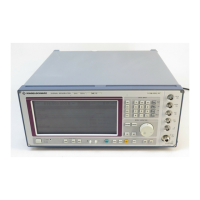SME Putting into Operation
1038.6002.02 1.2 E-13
1.1.3 Initial Status
Upon switching on, the instrument either automatically assumes the status which was set when it was
switched off (parameter POWER-ON STATE PREVIOUS SETTING in LEVEL-LEVEL menu) or the RF
output is disconnected (POWER-ON STATE RF OFF).
If the instrument need not to be operated from the initial status any further, a defined default status
should be established by pressing the [PRESET] key prior to further settings.
STANDBY Mode
In the STANDBY mode the optional reference oscillator (option SM-B1) remains switched on, which
increases frequency accuracy.
Frequency accuracy after switching on when the oven-controlled reference oscillator is fitted
(option SM-B1)
When switching on from the STANDBY mode, the specified frequency accuracy is reached immediately.
If the power switch was switched off, the reference oscillator needs some minutes of warm-up time to
reach its nominal frequency. During this period of time, the output frequency does not yet reach its final
value either. In the status line in the header field of the display the message "OVEN COLD" is displayed
for this time.
1.1.4 Setting Contrast and Brightness of the Display
Brightness control
Contrast control
Contrast and brightness of the display can be set by means of the contrast and brightness controls
situated below the display.
1.1.5 RAM With Battery Back-Up
The SME has a static read-write memory (CMOS-RAM) with battery back-up, in which 50 different
complete settings of the instrument can be stored (cf. Chapter 2, section "Storing and Calling of
Instrument Settings"). In addition, all data and/or lists the user enters himself, such as for list mode,
memory sequence, user correction of the level and data sequences with digital modulation, are stored in
the RAM. Further, all data of the calibrations running within the instrument in the SME are stored in the
RAM (cf. Chapter 2, section "Calibration").
A lithium battery with a service life of approx. 5 years serves to supply the RAM with power. When the
battery is discharged, the data stored will be lost. Exchanging the battery is described in Chapter 4.

